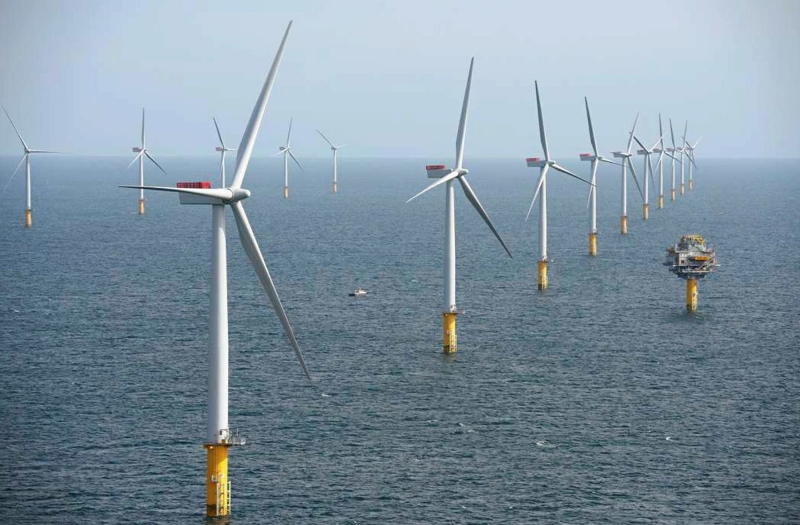Norwegian energy major Statoil will pay out $42 million for provisional rights to develop wind energy off New York — by far the biggest play yet for a wind lease in U.S. waters.
Statoil subsidiary Statoil Wind US LLC must pass federal agency reviews before it can open a one-year preliminary lease — and a hearing in U.S. District Court, where a Feb. 8 date has been set to hear commercial fishermen’s motion for an injunction against the lease.
Located 11.5 miles south of Jones Beach, N.Y., on Long Island, the New York Wind Energy Area is a triangle of 79,350 acres on the sea floor, wedged between two busy shipping lanes for New York Harbor.
If developed with wind turbine arrays, the area would feed into power-hungry Long Island and the New York metro area. Competition for the lease was intense, said Abigail Ross Hopper, director of the federal Bureau of Ocean Energy Management.
“We have seen robust competitive interest for this auction, as evidenced by 33 rounds of bidding — the most we have seen for any of our lease sales to date,” Hopper said in announcing the sale. “BOEM will continue to work with the members of out New York Intergovernmental Renewable Energy Task Force and the public on any future wind energy project proposed for this lease area.”
The $42 million commitment from Statoil is more than twice the $16 million BOEM has brought in so far with leasing one million acres for wind energy development in previous sales.
The New York area got started in September 2011, when BOEM received an unsolicited request from the New York Power Authority, Long Island Power Authority, and Consolidated Edison. That proposal envisioned up to 194 turbines, with a total generation potential 700 MW, about the same as a midsize nuclear generating station.
Contenders in the Thursday bidding included Avangrid Renewables LLC, DONG Energy Wind Power (U.S.) Inc., Innogy US Renewable Projects LLC, the New York State Energy Research and Development Authority, and wpd offshore Alpha LLC.
Like Statoil, DONG (Danish Oil and Natural Gas) is a major player in the North Sea wind turbine industry, and is taking an avid interest in the U.S. market. DONG has acquired lease rights to areas offshore of Martha’s Vineyard, Mass., and New Jersey.
Construction of such large offshore arrays could begin in the 2020s. A Trump administration hostile to wind energy might slow the permitting process, experts say. But states such as New York and Massachusetts that support wind power could continue to lay the groundwork for those projects.
If the court approves BOEM’s lease award, Statoil would have a one-year preliminary lease in which to submit a site assessment plan, describing how it will use meteorological towers or buoys to document wind and sea conditions in the area.
Following that, the company would have four and a half years to submit a construction and operations plan to BOEM. At that point, the agency says, it would “conduct an environmental review of the proposed projects and reasonable alternatives.”
Commercial fishermen say that process is backward. In their motion before a federal judge in Washington, D.C., lawyers for industry groups and port towns including New Bedford, Mass., contend the BOEM process is ignoring the concerns of scallop and squid fishermen who make their living on the waters off Long Island.





